Accounting for more than 53% of the province's population, the Thai people in Son La are a community with strong influence and far-reaching influence. The traditional costume of Thai women includes a tight-fitting Com shirt, a jet-black skirt with intricate patterns, and a distinctive highlight is the Pieu scarf. The value of the costume lies in the system of decorative patterns, the motifs are created according to strict aesthetic rules, reflecting the worldview and rich spiritual life. The patterns often simulate familiar images of nature and life such as Ban flowers, trees, birds, the sun or stylized symbols such as dragons, phoenixes, khau cut...
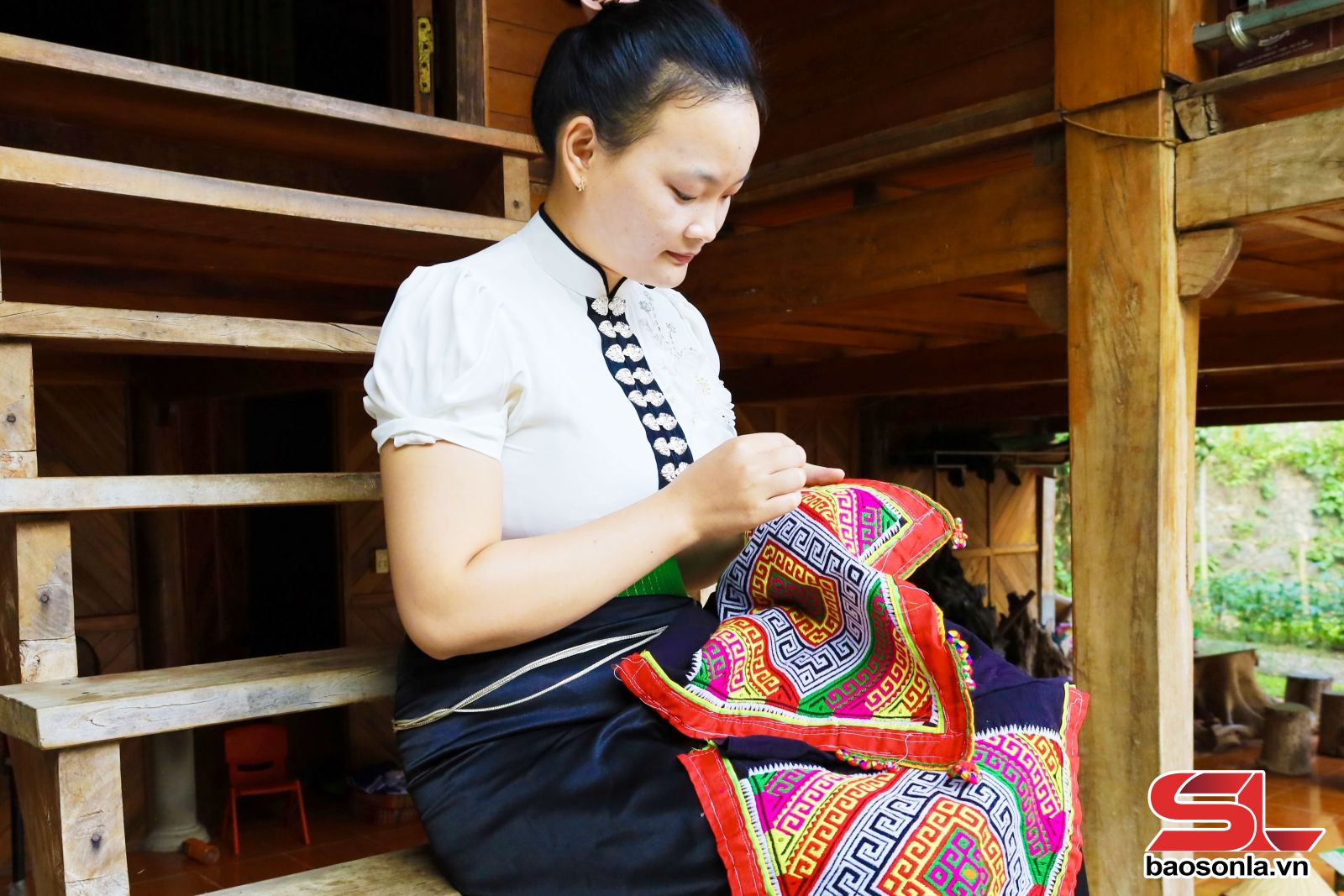
Thai women in Muong La commune embroider Pieu scarves.
On the Com shirt, the highlight is the row of silver buttons in the shape of butterflies and cicadas, symbolizing fertility and the bond between couples. But the most special thing is the Pieu scarf. Looking at the Pieu scarf, one can "measure" the ingenuity, diligence, and even the thoughts and feelings of the woman who made it. The patterns on the Pieu scarf have a symmetrical layout, bright colors but in harmony with the main motifs such as the khau cut at both ends of the scarf and the sophisticated decorative borders.
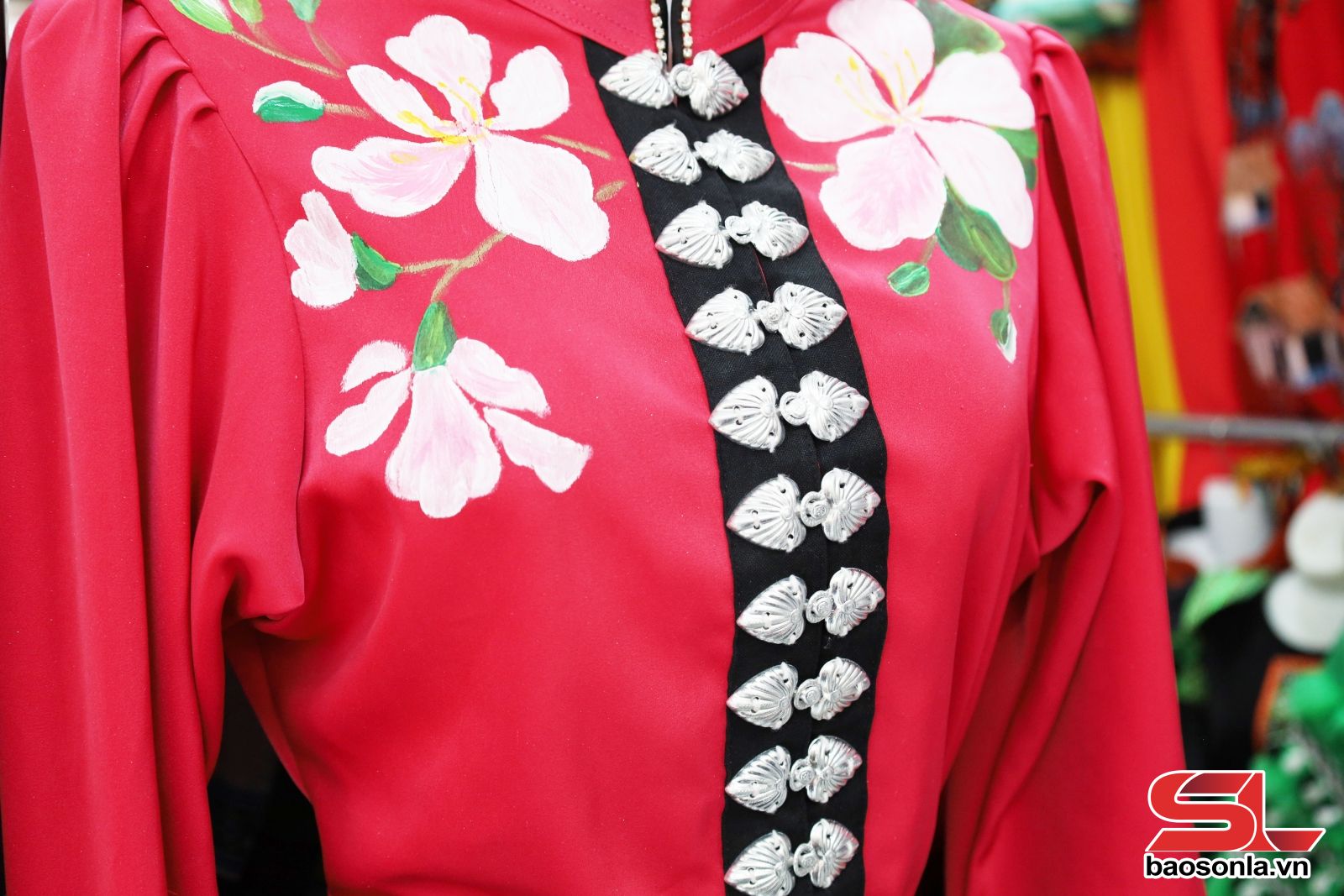
Thai women's national costume stands out with rows of silver buttons.
Welcoming us in the traditional stilt house in Na Loc village, Muong La commune, Ms. Luong Thi Hoai quickly passed the needle and told: For Thai people, patterns are not only for beauty, but also a unique feature of each ethnic group's tradition. The most important is the " cut pieu" motif in the middle of the scarf, which looks like an eye, symbolizing the protection of ancestors. The "ta léo" shaped like an eight-pointed star symbolizes good luck and warding off evil spirits. We also embroider trees, dragons, phoenixes... All of them convey the wish for a prosperous and happy life, a bountiful harvest, and the reunion of children and grandchildren.
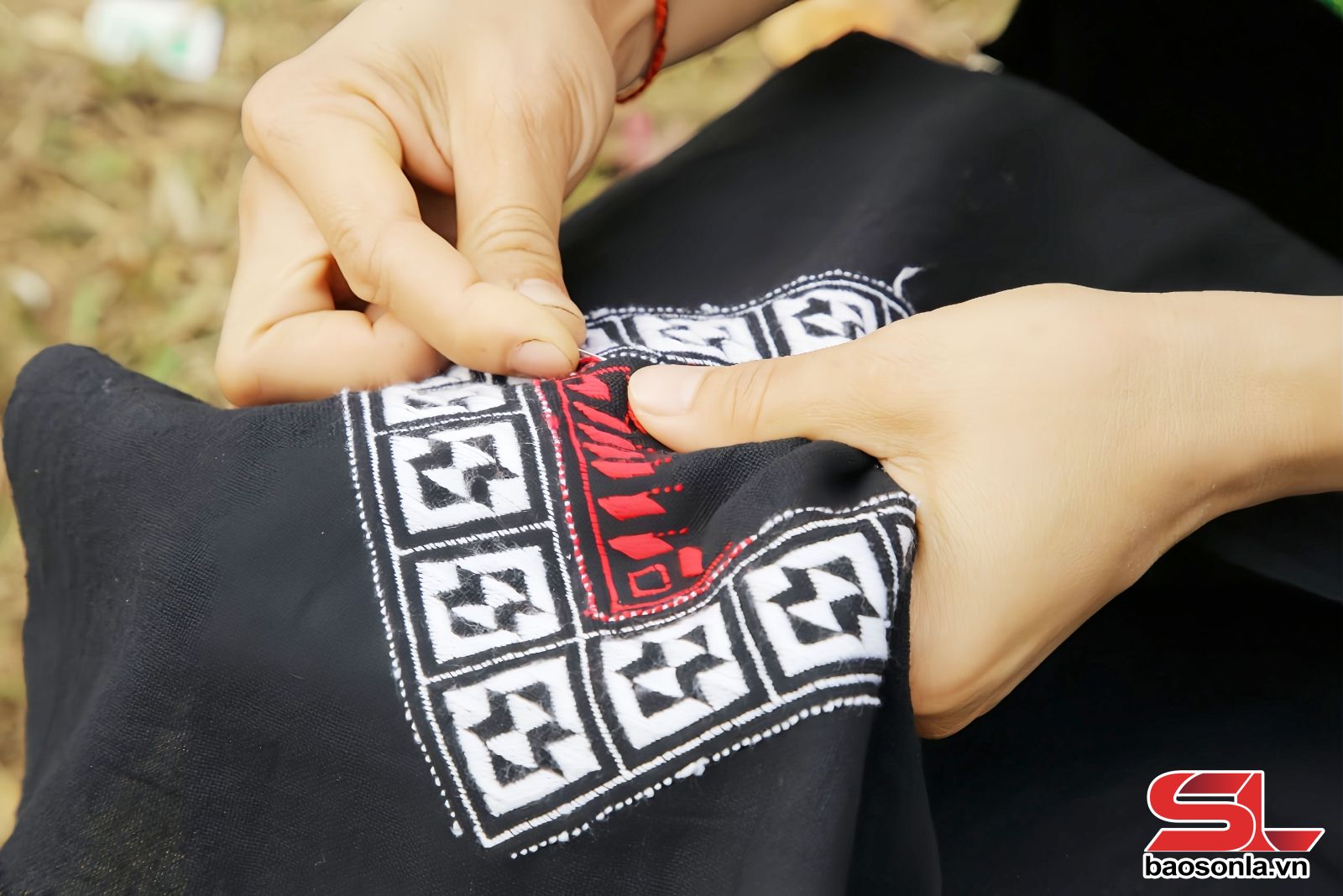
The meticulous craftsmanship in every needle and thread creates the unique pattern of the Pieu scarf.
To complete a Piêu scarf, a woman must spend months meticulously selecting each colored thread, and each stitch must be even. When a Thai girl grows up, before moving to her husband's house, she must personally embroider a beautiful Piêu scarf to give to her parents-in-law. This is filial piety, love, patience, and the way the Thai people preserve the story of their people.
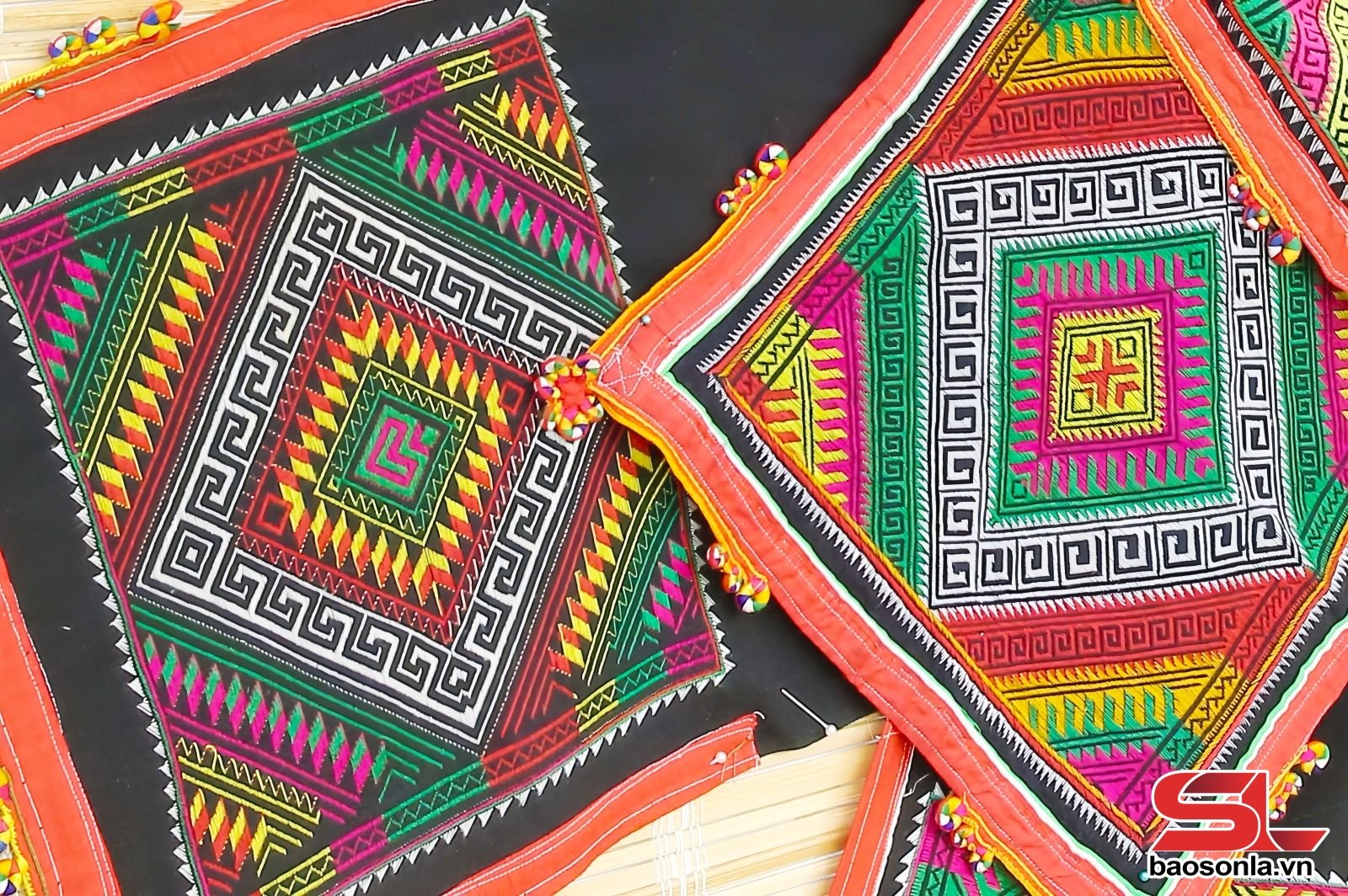
The characteristic patterns of the Thai ethnic group.
If Thai women's costumes impress with the sophistication in each woven and embroidered pattern, La Ha's costumes have a different beauty, rustic, simple but very unique. Most noticeable is that La Ha women's dresses are usually just a plain indigo black color, without elaborate patterns on the hem like Thai costumes.
The headscarf, also known as the piêu scarf, also has its own unique characteristics. It is a black indigo-dyed cotton scarf with simple embroidered patterns. La Ha women do not wear scarves to show off the patterns, but mainly to keep warm, protect from the sun, and keep their hair neat while working. They often wrap the scarf around their heads in a circular fashion, or fold it and cover their heads, tying it neatly at the nape of their neck.
Their com shirts are also more modest, with round collars and rows of round or flat silver buttons. The difference is also reflected in men's clothing: while traditional Thai men wear flared-crotch trousers, La Ha men choose narrow-leg trousers, simpler and neater.
In that simplicity, without any ornate embellishments, the La Ha people's costumes exude a strong, rustic beauty and are closely associated with their daily working life.
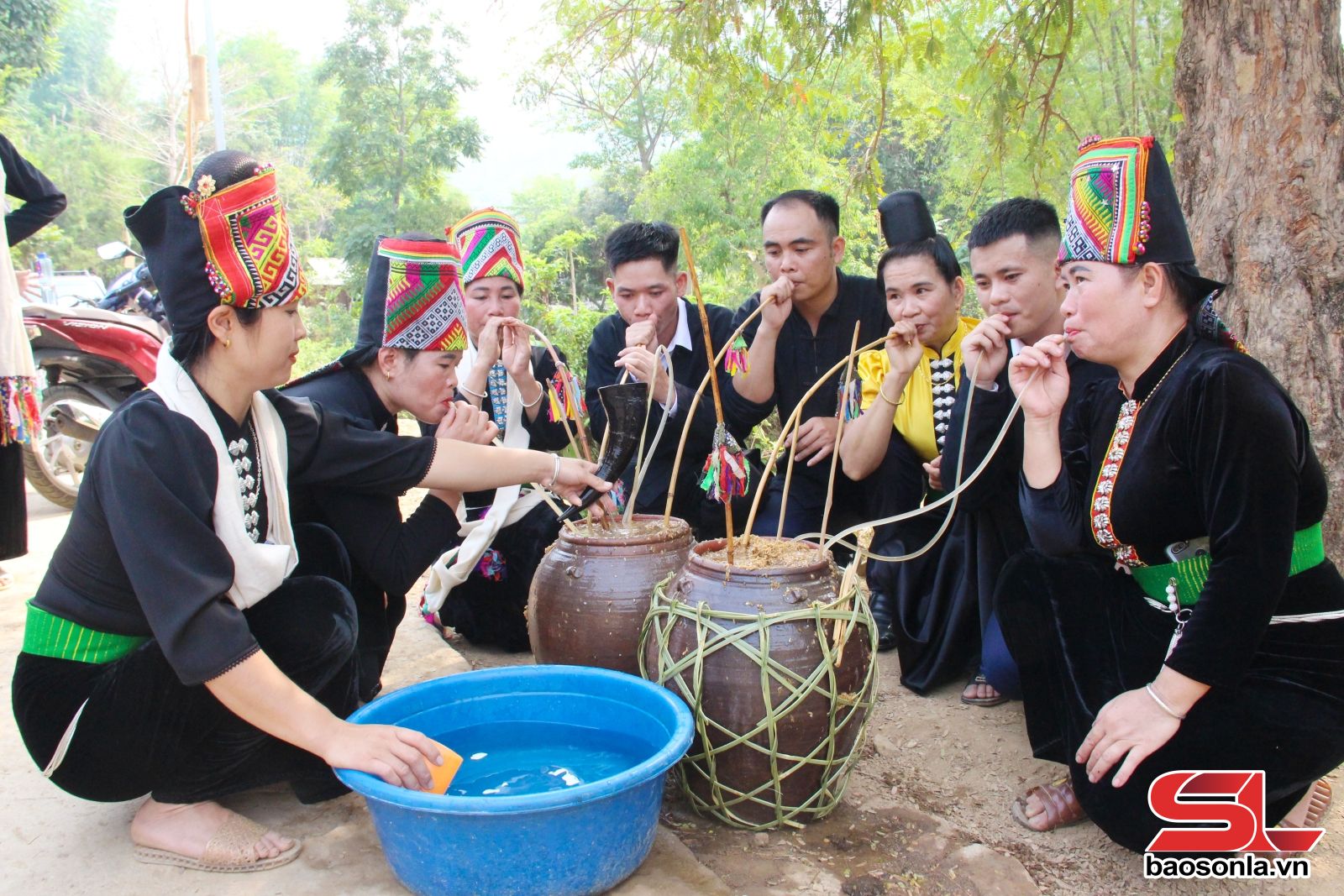
La Ha women wear a scarf wrapped around their head and tied at the back of their neck.
Lo Thi Quynh Nga, Pi Tay village, Muong La commune, is only 15 years old this year but can already complete a rather sophisticated scarf. Nga shared: Since the age of 13, my grandmother has taught me how to embroider scarves. She said that I have to be patient and meticulous to have a beautiful embroidery. Now I can embroider a scarf myself. I feel very happy and proud to wear the scarf I made myself during national holidays and New Year.
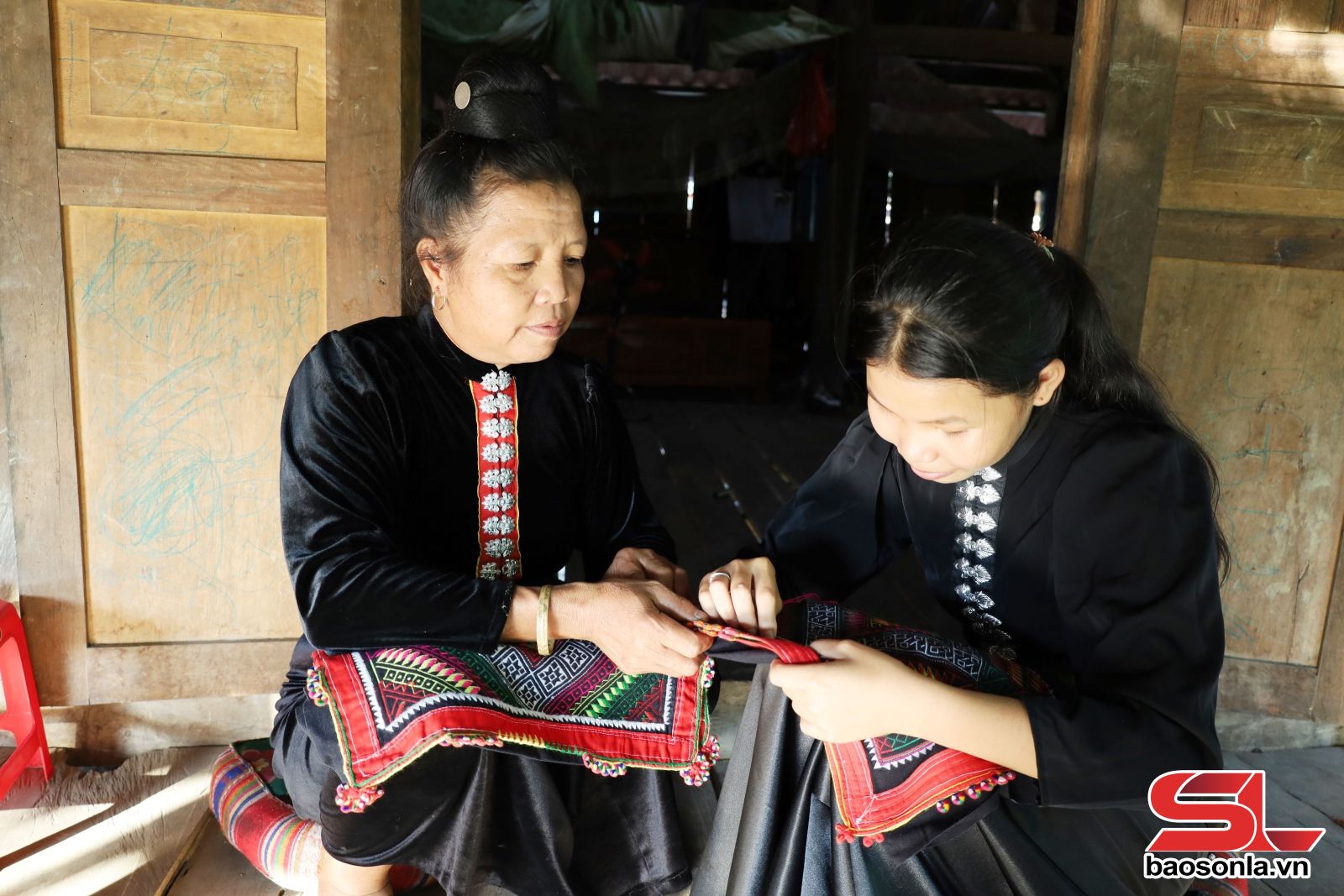
La Ha ethnic women teach their children to embroider Pieu scarves.
While the Thai people's costumes are delicate and graceful, the La Ha people's costumes are simple and rustic, the Mong people's costumes leave a strong impression with their brilliance, sophistication and unique shaping techniques. The Mong people's costumes, mainly the Flower Mong and Black Mong, are a complex whole, combining many techniques such as beeswax painting, hand embroidery and fabric patchwork.
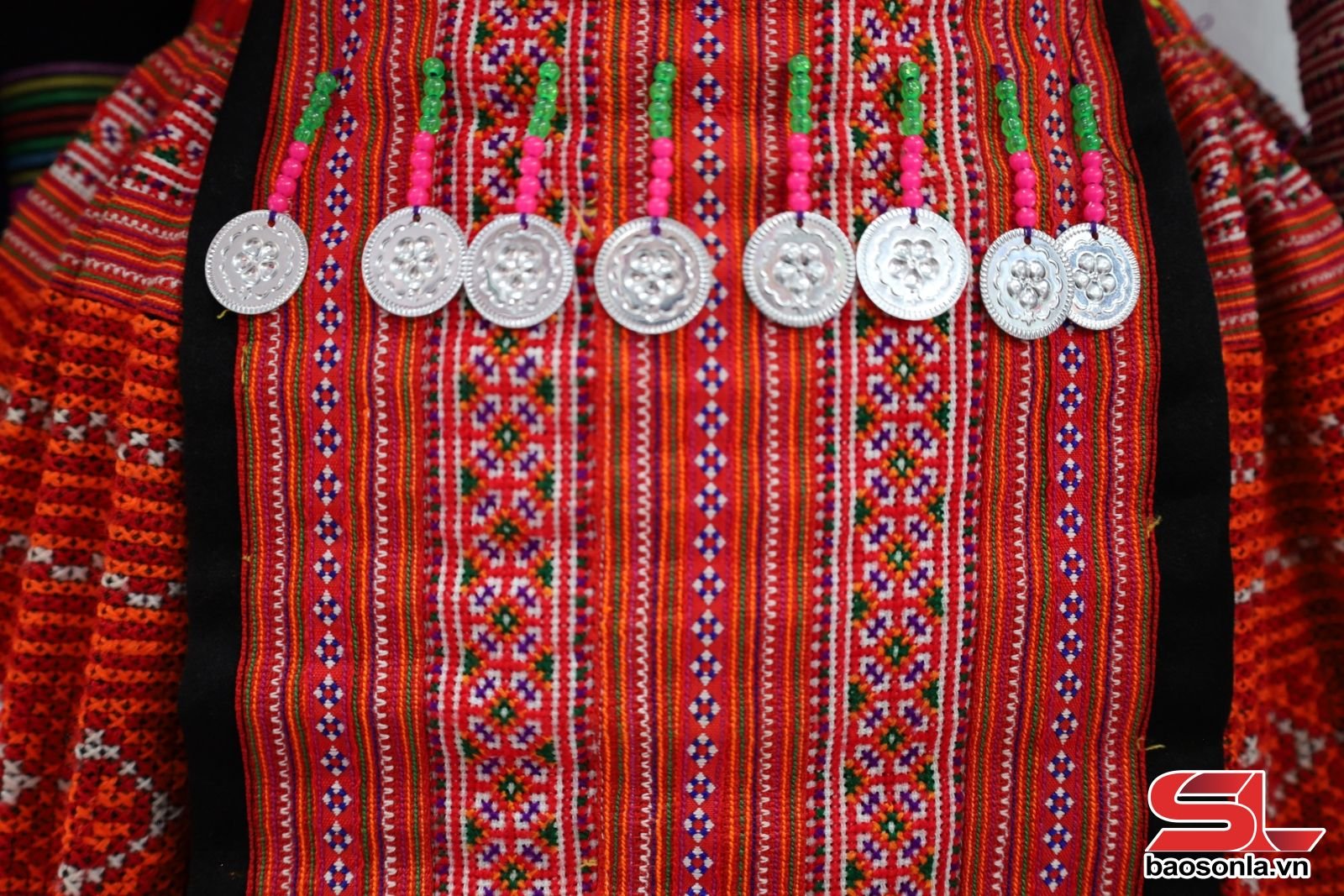
The colorful patterns on traditional costumes of the Mong ethnic group.
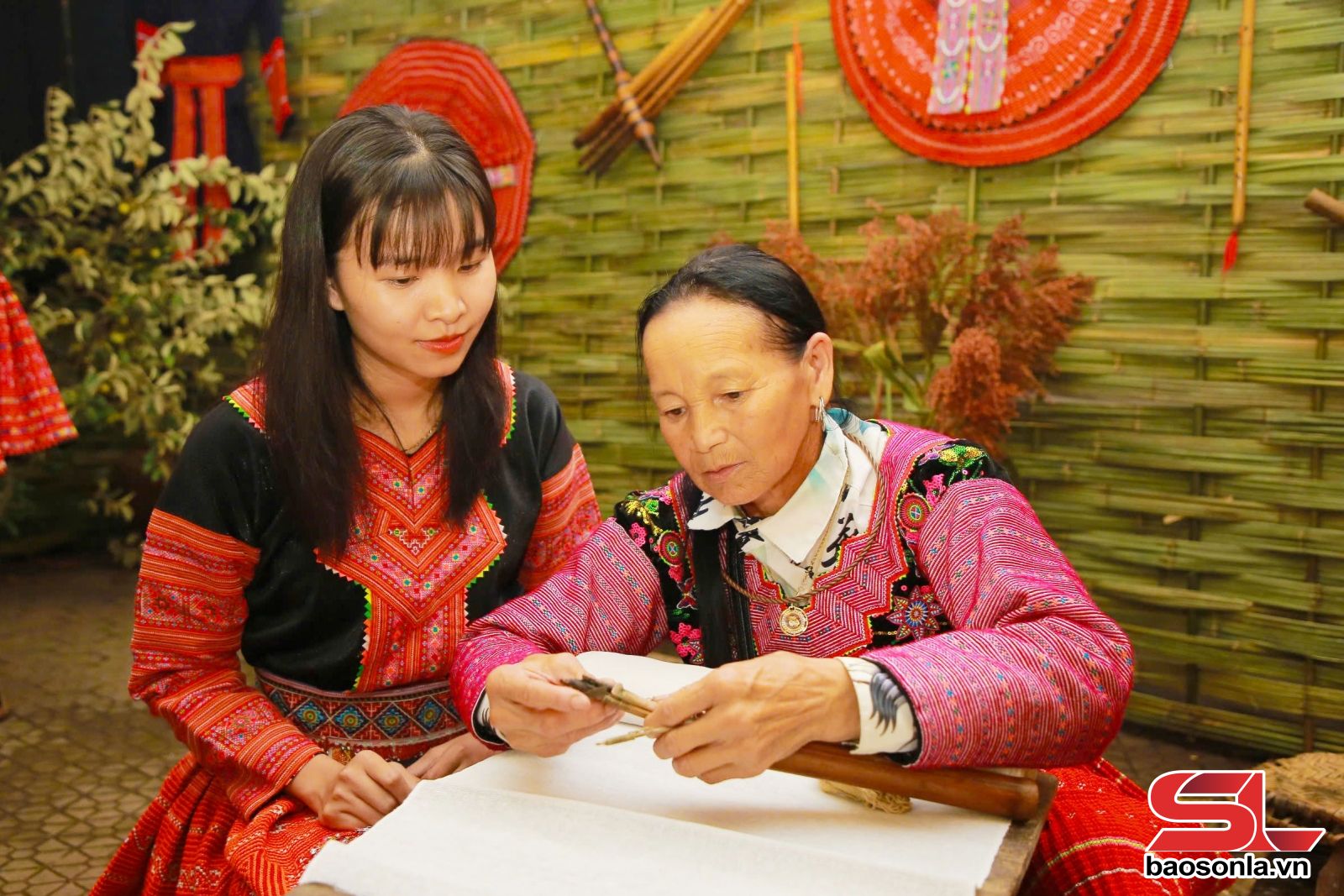
Mong ethnic women guide tourists to paint beeswax on fabric.
To complete a traditional flared skirt, Mong women must meticulously go through many elaborate steps. First, they use a special tool called a “nầu” (beeswax pen) dipped in a pot of melted beeswax and then skillfully draw each stroke onto the linen fabric. Each soft wax line creates symmetrical geometric patterns, such as snail shells, squares, S-shaped shapes, chicken feet, squash flowers… all of which evoke familiar images from mountain and forest life.
Once the pattern is completed, the fabric is dyed with indigo many times. The beeswax layer helps to preserve the color, so when the fabric is boiled in water, the wax melts, leaving ivory or light blue patterns standing out on a dark indigo background, delicate and magical like a painting. Not stopping at wax painting techniques, the Mong people also combine embroidery and fabric patchwork with skillful craftsmanship. They use silk and woolen threads in brilliant red, yellow, orange, blue colors... to create vivid patterns on the skirts and shirts, which are both costumes and works of art containing the soul and identity of the Mong people.
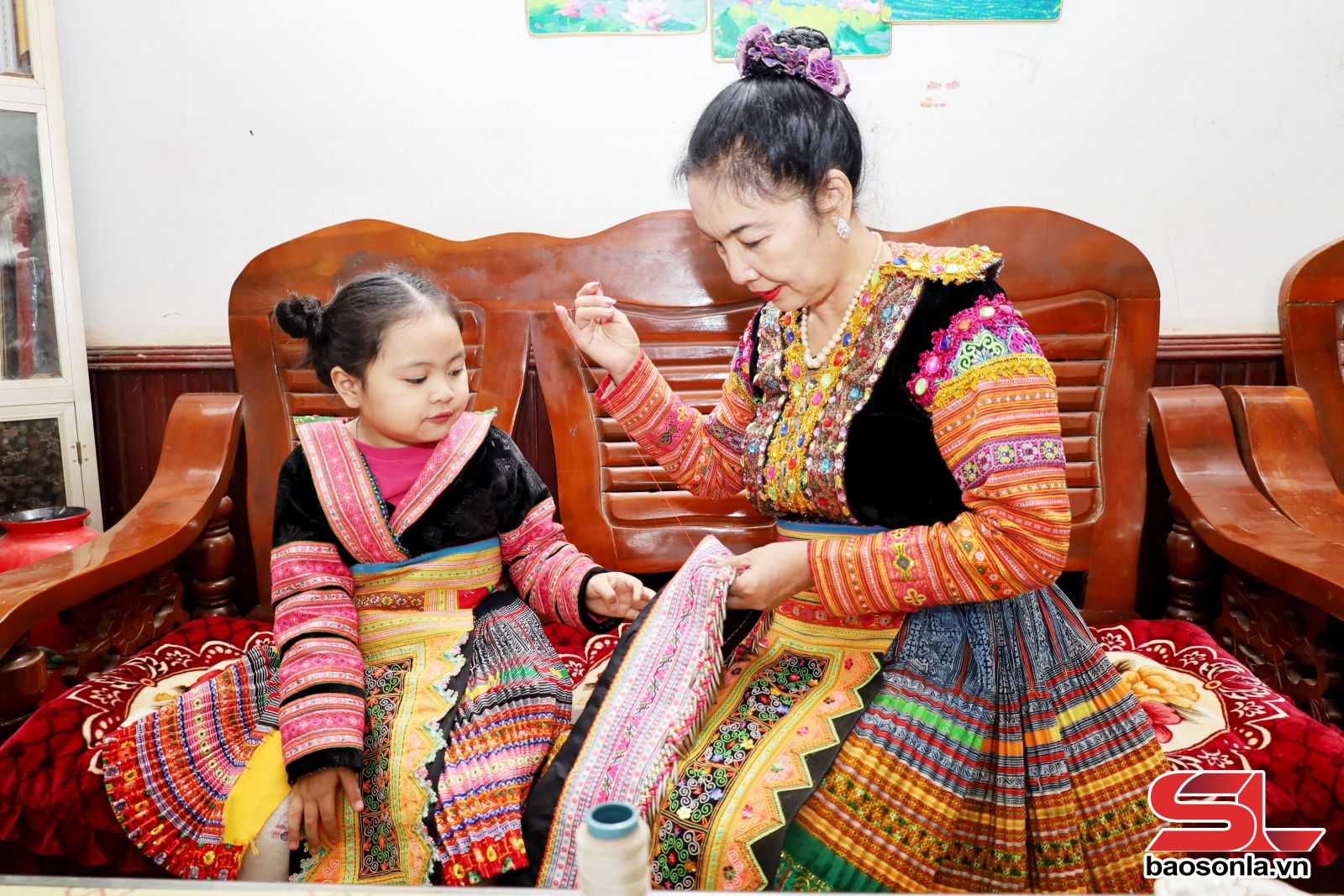
Mrs. Phung Thi Mai, To Hieu ward, embroiders patterns on the skirts of Mong ethnic people.
Amidst the hustle and bustle of urban life, it is precious to see Mong families quietly preserving the traditional culture. We visited the family of Mrs. Sung Thi Mai, Group 8, Chieng Le, To Hieu Ward. Although living in the central ward, Mrs. Mai and her family always respect and preserve the culture of the Mong people through their house, lifestyle and especially traditional costumes. In addition to sewing costumes for her family, for the past 3 years, Mrs. Mai has also expanded her house to rent costumes, contributing to spreading the cultural beauty of her people.
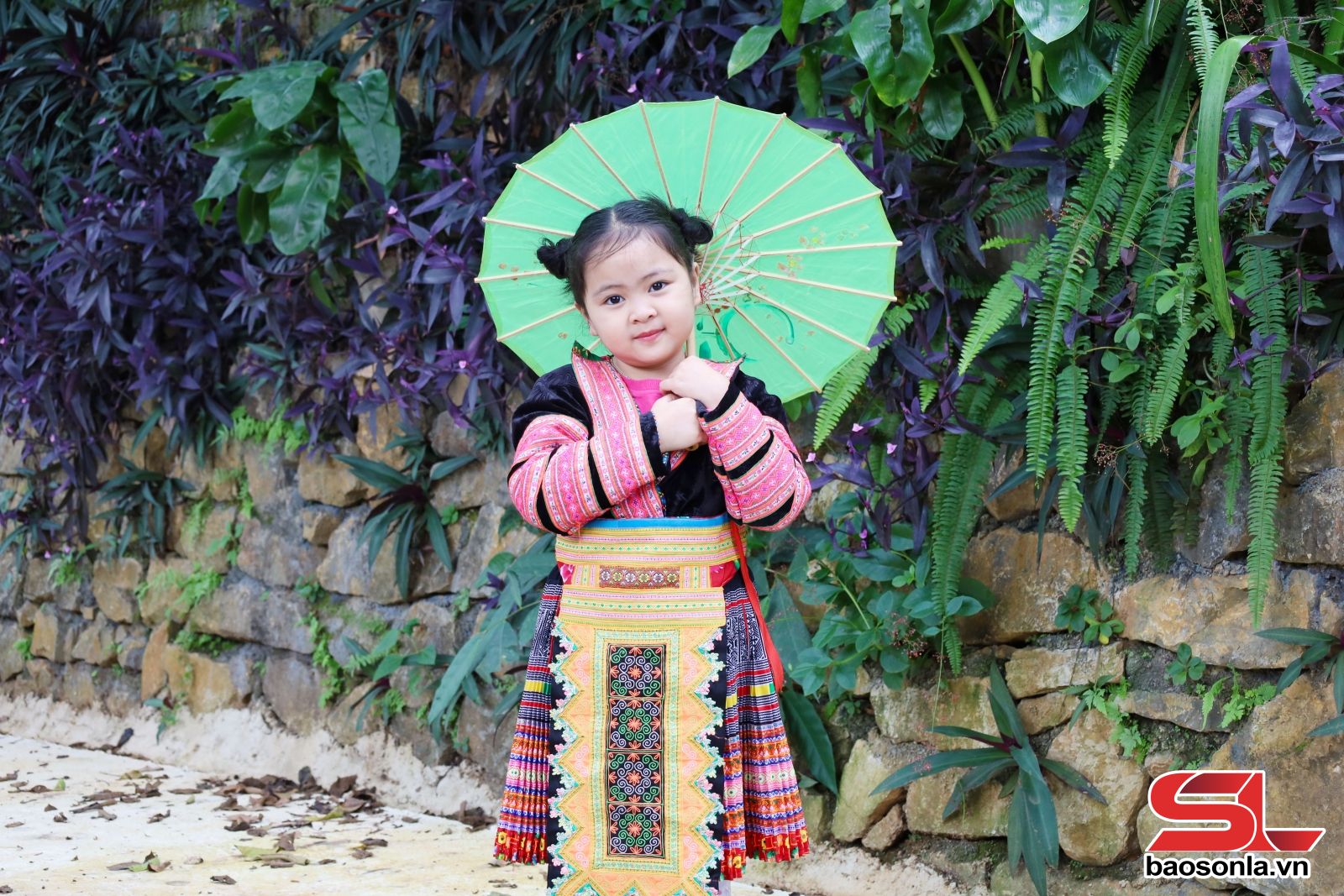
Hmong girls are radiant in traditional costumes.
Mrs. Mai confided: Even though I live in the city and no longer work on the fields, I always keep in mind that I must preserve the embroidery and beeswax painting profession of my ancestors. Preserving the profession means preserving the roots of my people. I taught my grandchildren the profession since they were young; this is the costume of their grandparents and ancestors, so that they can be proud. Every holiday or New Year, the whole family wears Mong costumes together. Seeing my grandchildren wearing these colorful dresses is my happiness.
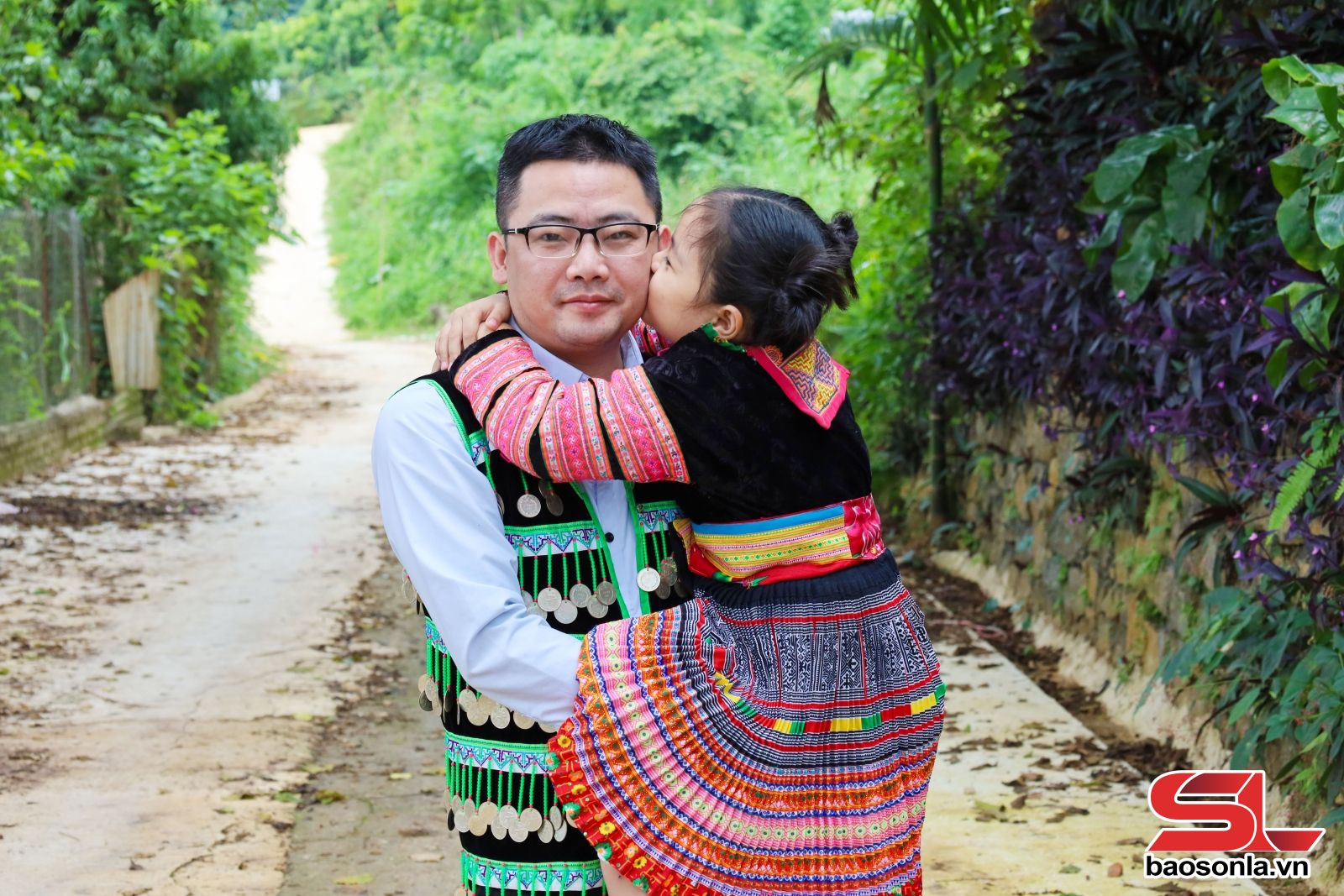
The beauty of traditional Mong costumes is preserved through generations.
From the vibrant colors of the Mong people's dresses, the charm of the Thai people, the simplicity and closeness of the La Ha people to the delicate and sophisticated patterns of the Dao people... all blend together to create a multi-colored cultural picture that is still unified in the unique identity of Son La . Each pattern on the costume is not just a decorative needle and thread, but a vivid history marking the history, beliefs, lifestyle and aspirations of an entire community. Through the ups and downs of time, those costumes are not only for wearing, for beautifying, but also a heritage, the soul of the nation, cherished, preserved and passed down through many generations.
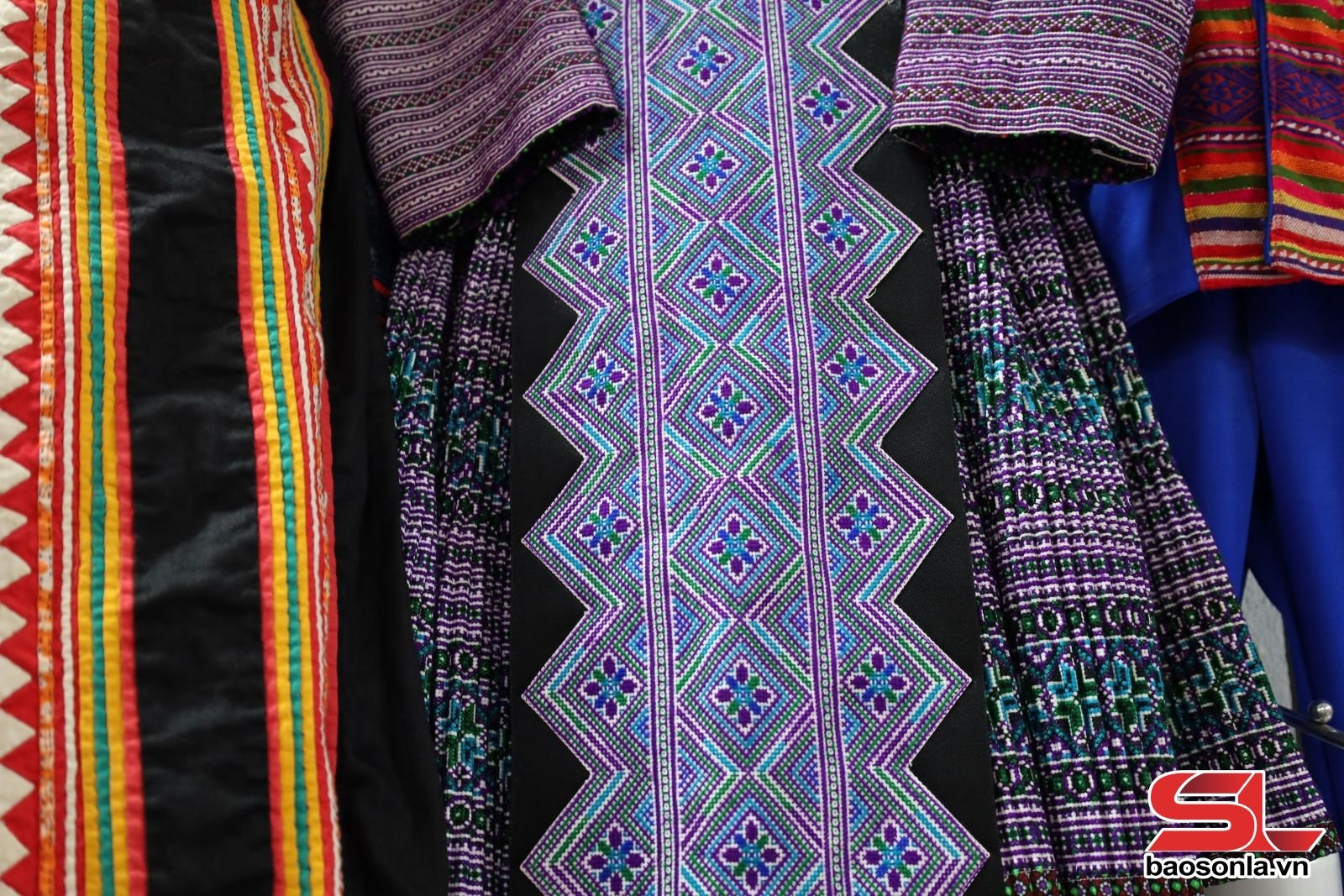
Patterns on traditional Mong ethnic costumes.
In modern life, preserving and promoting this unique beauty is the responsibility of each family and village, but also requires the cooperation of the whole community. Those colorful patterns continue to shine, affirming the enduring vitality of traditional culture in the richly-identified land of Son La.
Source: https://baosonla.vn/van-hoa-xa-hoi/net-hoa-van-dac-sac-tren-trang-phuc-cac-dan-toc-Zm7PCfgvR.html



![[Photo] The 5th Patriotic Emulation Congress of the Central Inspection Commission](https://vphoto.vietnam.vn/thumb/1200x675/vietnam/resource/IMAGE/2025/10/27/1761566862838_ndo_br_1-1858-jpg.webp)

![[Photo] Party Committees of Central Party agencies summarize the implementation of Resolution No. 18-NQ/TW and the direction of the Party Congress](https://vphoto.vietnam.vn/thumb/1200x675/vietnam/resource/IMAGE/2025/10/27/1761545645968_ndo_br_1-jpg.webp)
![[Photo] National Assembly Chairman Tran Thanh Man receives Chairman of the House of Representatives of Uzbekistan Nuriddin Ismoilov](https://vphoto.vietnam.vn/thumb/1200x675/vietnam/resource/IMAGE/2025/10/27/1761542647910_bnd-2610-jpg.webp)

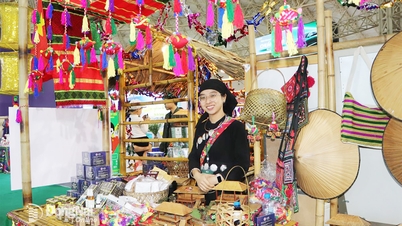

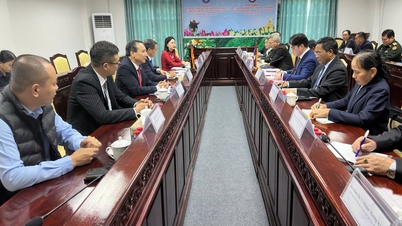



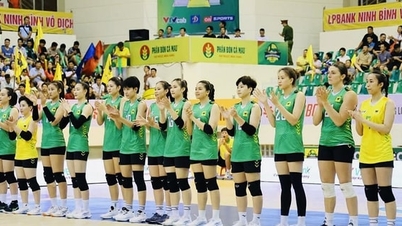

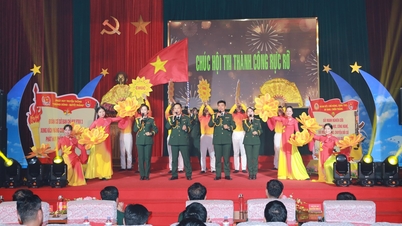





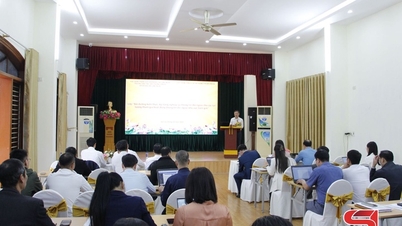
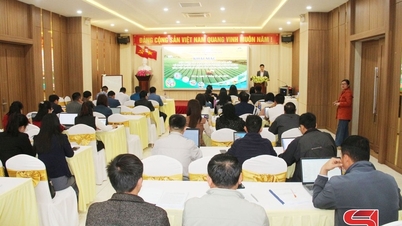
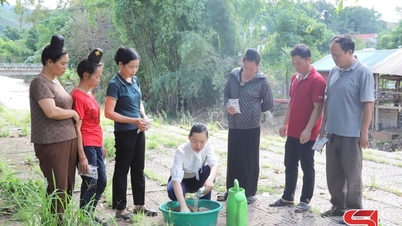
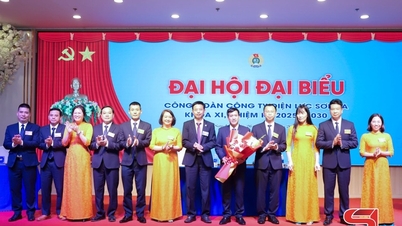
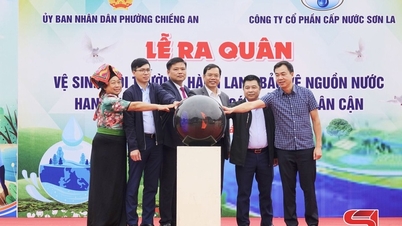
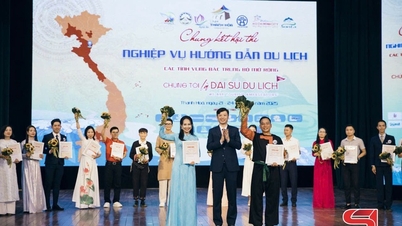

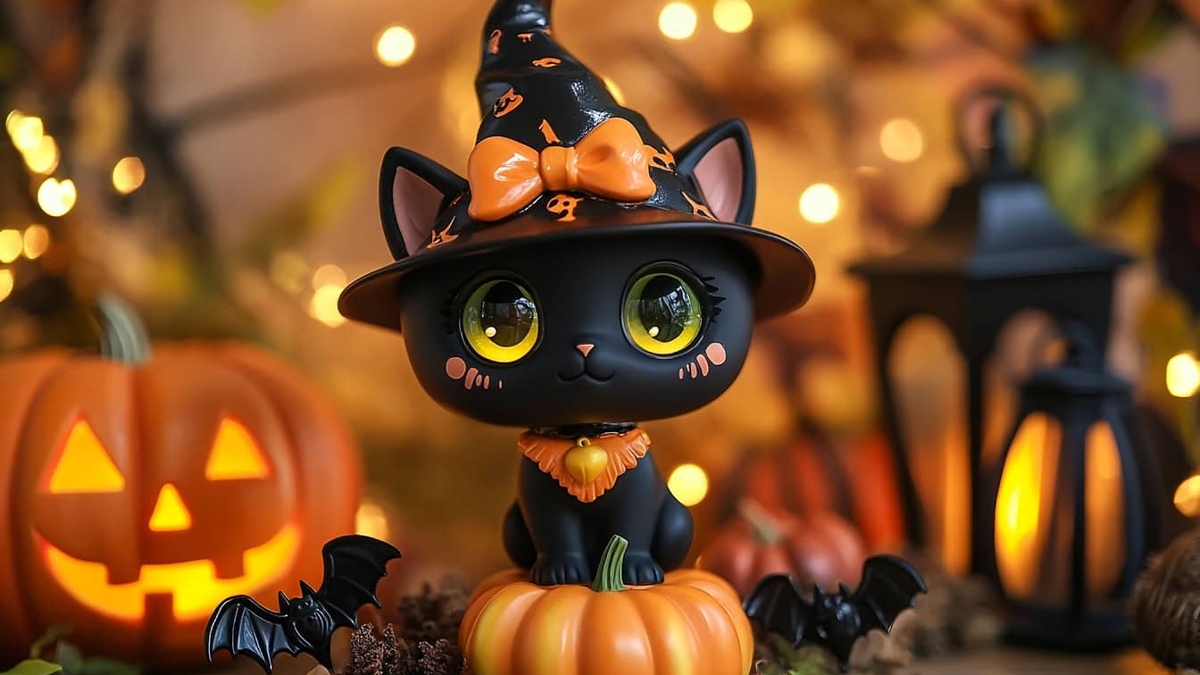








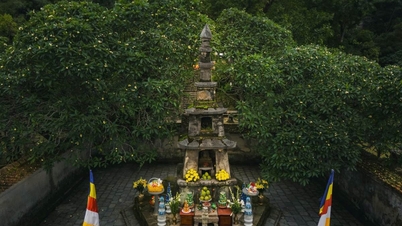

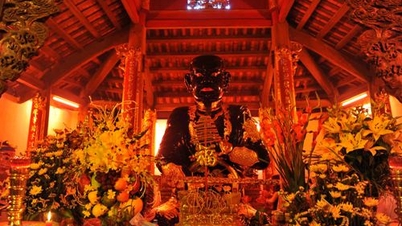

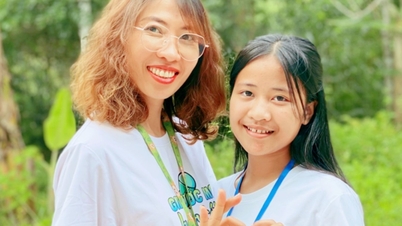
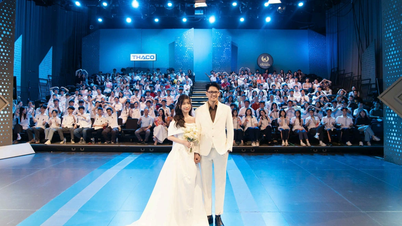

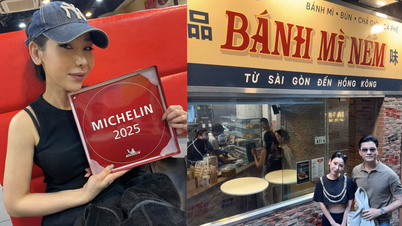

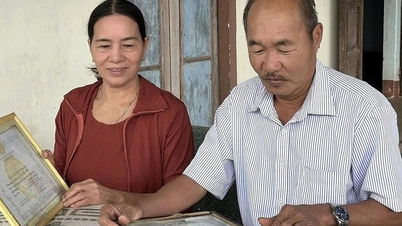





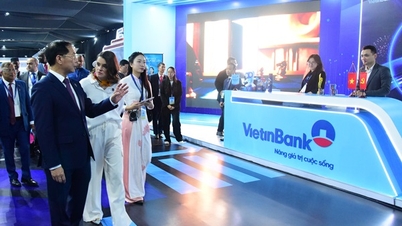

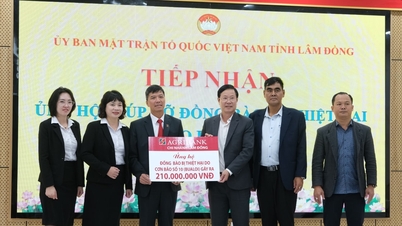














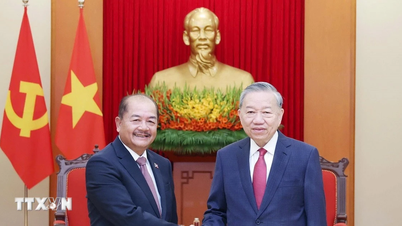

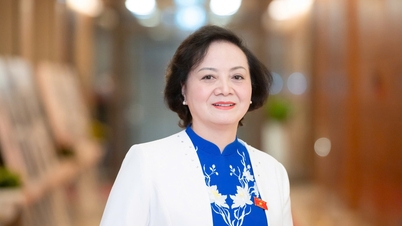


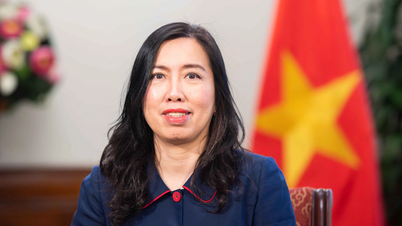
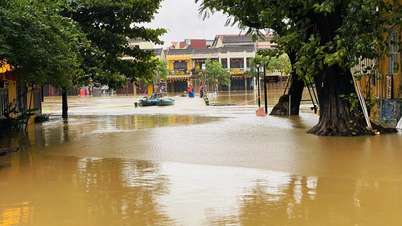
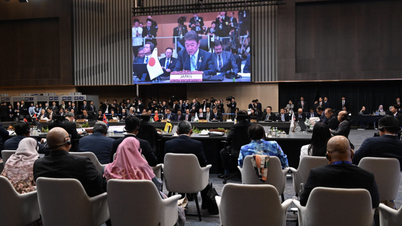

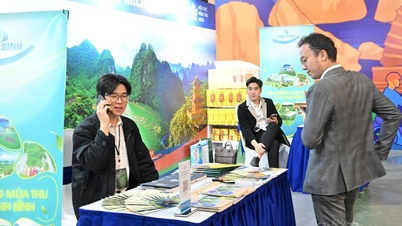
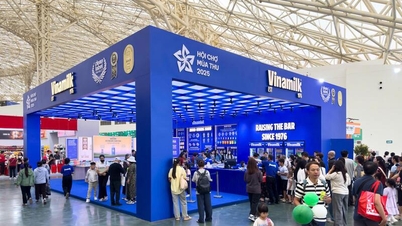




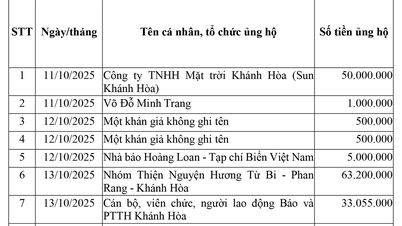

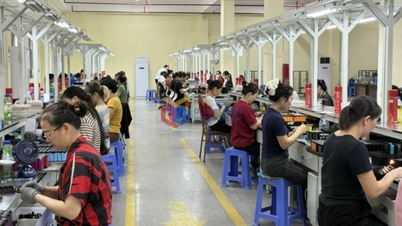

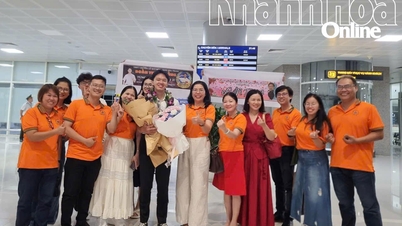


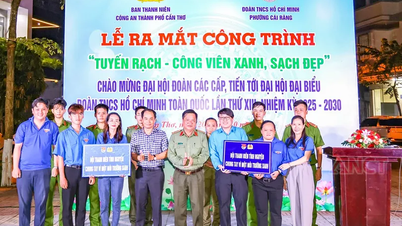
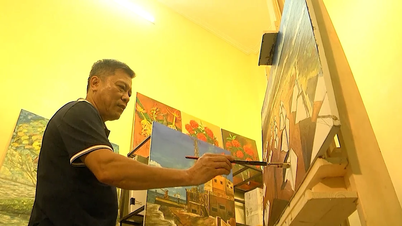











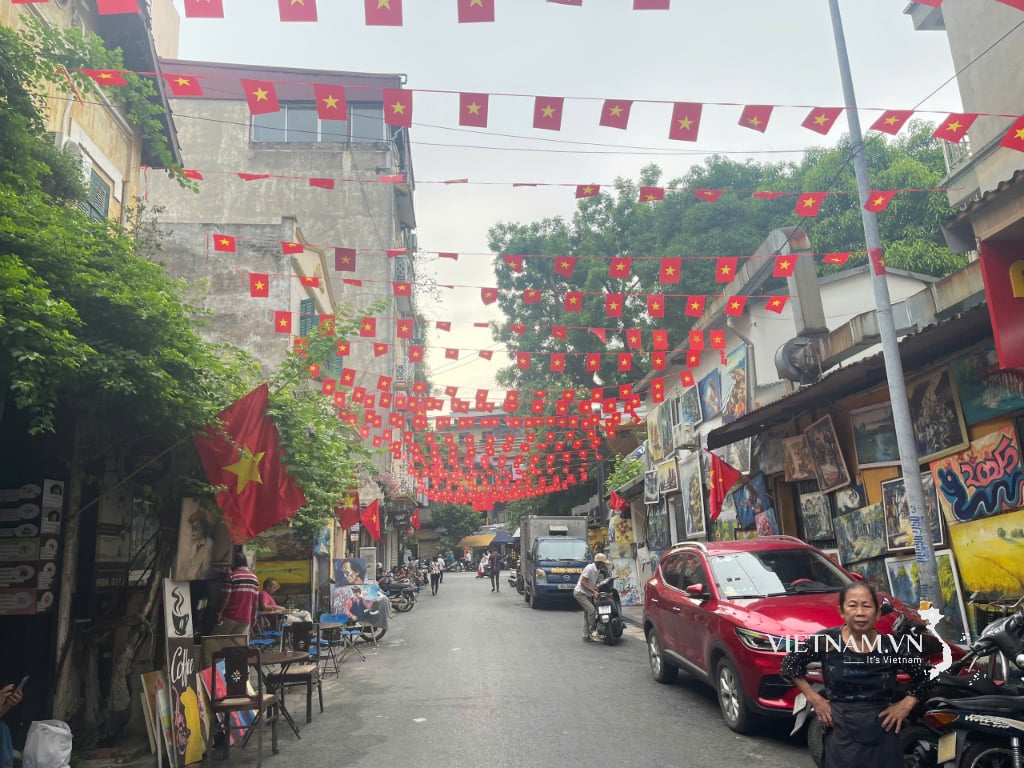



Comment (0)